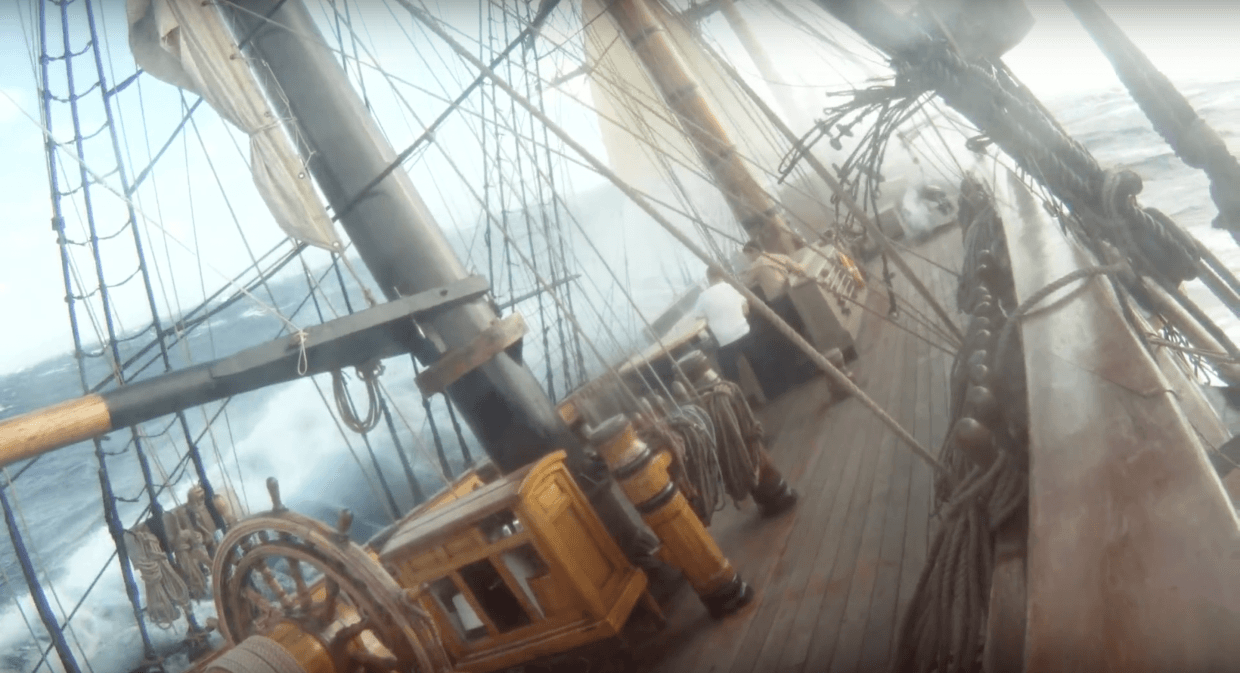Pre Production
One thing all of the tutorials I watched recommended and repeatedly referred to was reference footage and some accurate references can be the key to creating a realistic scene especially in a situation like this one. I myself have never seen a stormy ocean in real life, only in films and therefore my perception of what a “realistic stormy ocean” can only be extrapolated from that, therefore I have searched around on YouTube to find some footage other people have taken of non CGI stormy oceans. In a lot of cases the footage isn’t great, film equipment is expensive and so no one is taking especially fancy cameras into situations where they could very easily be damaged however I found 4 videos that I will be able to refer to during my production phase.
Angry Sea – The Perfect Storm in Reality (Mr Hd, 2010)
The benefit of this video is that a lot of it is filmed at a similar angle to where our camera will sit in our final shot, a lot of the problems with the other footage is it’s taken by the people on the boat and so it is hard to see what’s happening at the front, in this one however, we get a clear picture.
As we can see, because of the size of the boat, the front often hangs over the front of the waves before crashing back down and creating an immense splash with the whitewater actually seeming to hang in the air for quite some time before falling back to the ocean or dissipating. In addition to this there does seem to be some foam away from the boat but not nearly as much as around it.
Ocean Storm HD (Bagnik1, 2012)
This video doesn’t show any boats in the ocean but instead gives us an idea of what the actual ocean surface looks like naturally as well as the colour of the surface which is actually a lot darker than in my head. Unlike the previous footage, in quite a few of these shots, the foam is only forming around the waves while the rest of the ocean has very little to no foam whatsoever – from what I can tell a lot of this depends on the depth of the ocean.
In addition to this in some cases waves are travelling in different directions while in others all are being pushed in the same direction. In Houdini this is controlled through the Directional Bias tab with a value of 1 meaning all waves will travel at the exact same angle and 0 meaning the wave direction is entirely random. The direction of the waves are affected by the wind so when the waves are all travelling in different directions there must either be some factor under the water, or the wind direction is constantly changing.
Rough Seas on HMS Bounty (Marc Castells, 2010)
This footage is taken from on the boat as opposed to in front of it which initially I thought was a hindrance however as this is the type of boat I am hopefully going to use in my own simulation it was actually quite useful. My favourite thing about this piece of footage is it shows just how much the boat is listing to one side as it tackles the waves. In addition to this we get to see another angle of the spray. In this case, because the boat is smaller and weighs less, there does not seem to be as much whitewater created and it doesn’t seem to hang in the air for nearly as long. Lastly, in this scene the majority of the foam seems to be surrounding the boat while there is practically none further away.
Thoughts
All this reference footage will be extremely useful in the next stage of my scene production. These videos combined with the knowledge I gained from the tutorials mean that I have everything I need now to start work on my actual shot in the next post, the benefit now of having these blog posts is that I always have something to refer back to if I hit a wall in my production.
References
- Mr HD (2010) Angry Sea – The Perfect Storm in Reality [youtube]. Available from: https://www.youtube.com/watch?v=UG6FhK96dBg [accessed 31 October 2018].
- Bagnik1 (2012) Ocean Storm HD [youtube]. Available from: https://www.youtube.com/watch?v=UqKe6M6593Q [accessed 31 October 2018].
- Marc Castells (2010) Rough Seas on HMS Bounty [youtube]. Available from https://www.youtube.com/watch?v=jI4Jh5_woT0 [accessed 31 October 2018].

